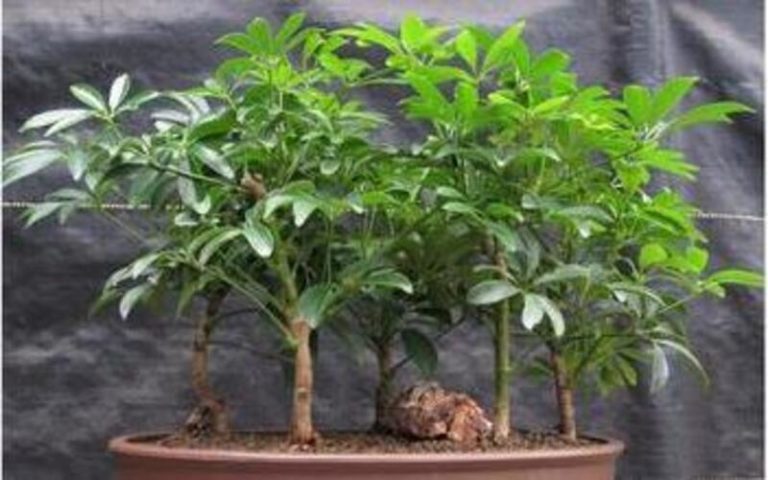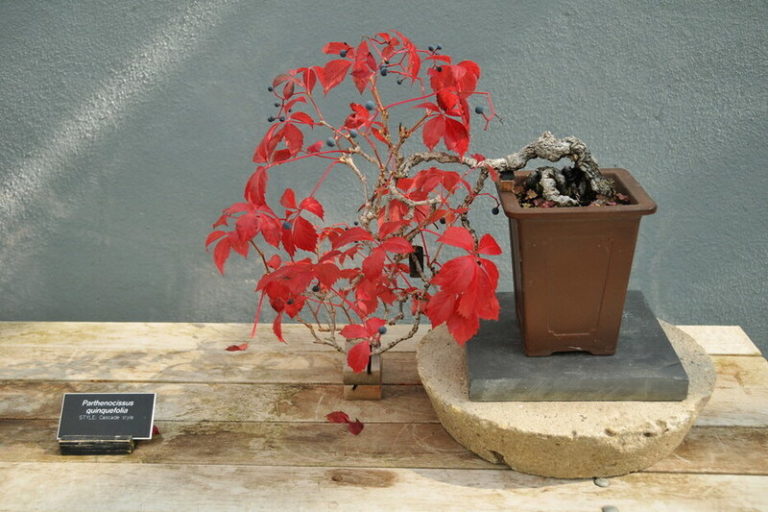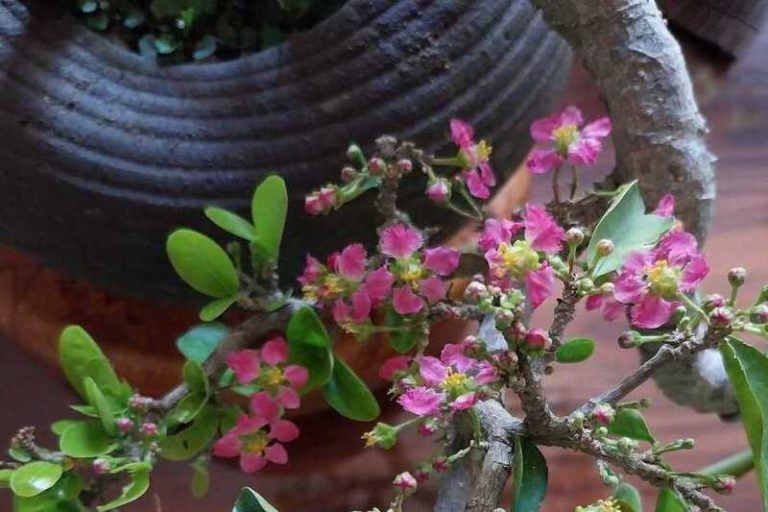Sumac Bonsai: A Tiny Tree with a Big Impact
Sumac Bonsai is a unique sort of bonsai tree with its own distinct charm and beauty. In this post, we will go through the fundamentals of developing and caring for Sumac Bonsai in a straightforward and accessible manner.
What is a Sumac Bonsai?
Sumac Bonsai is a miniature version of the sumac tree created through pruning and training techniques. It captures the beauty of sumac trees with their compound leaves and vibrant autumn colors. The bonsai artist carefully shapes the trunk and branches to create an appealing form. Sumac Bonsai adds charm to bonsai collections with its delicate foliage and attractive bark. With proper care, it can thrive and provide enjoyment for bonsai enthusiasts.
History and Origins of the Sumac Bonsai
The history and origins of Sumac Bonsai can be traced back to the ancient art of bonsai, which originated in China and later spread to Japan. Bonsai, meaning “tray planting,” involves cultivating and shaping trees in miniature form.
Sumac trees, members of the genus Rhus, have a long history and cultural importance in many regions of the world. They are found in North America, East Asia, and the Mediterranean. These trees are well-known for their durability, vivid foliage, and adaptation to many climates.
The art of creating Sumac Bonsai emerged as bonsai cultivation gained popularity in Japan during the 17th century. Japanese bonsai enthusiasts began experimenting with different tree species, including sumac, to create miniature versions that showcased the beauty and characteristics of their full-sized counterparts.
Over time, skilled bonsai artists refined the techniques for shaping and training sumac trees into bonsai form. They learned to manipulate the growth patterns, prune branches, and create desired trunk shapes. The result was the development of Sumac Bonsai as a unique and captivating bonsai variety.
Sumac Bonsai is now prized by bonsai aficionados throughout the world for its unusual leaves, spectacular fall hues, and aesthetic challenge. Its roots may be traced back to China and Japan’s ancient bonsai techniques, where the art of creating live miniature landscapes flourished.
Sumac Bonsai and Their Symbolism
Sumac Bonsai carries symbolism and cultural significance that add to its appeal as a bonsai tree. Here are some symbolic meanings associated with Sumac Bonsai:
- Resilience: Sumac trees are noted for their capacity to grow in harsh environments in their natural habitat. They represent tenacity and strength as bonsai, urging us to endure and adapt in the face of adversity.
- Balance: Sumac Bonsai’s symmetrical and balanced form represents harmony and equilibrium. It embodies the concept of finding balance in life and embracing both the highs and lows with grace.
- Vitality and Growth: Sumac Bonsai, with their vivid leaves and robust growth, represent vitality and life force. It acts as a continual reminder of the cycle of development and rebirth.
- Autumnal Beauty: Sumac trees are renowned for their stunning autumn colors, ranging from fiery reds to vibrant oranges. As bonsai, they symbolize the transient nature of life and the beauty found in embracing change.
- Connection to Nature: Sumac Bonsai are popular as a small-scale approach to interact with nature. They are a small picture of the natural world, eliciting feelings of serenity, tranquility, and admiration for the natural world’s beauty.
- Cultural Significance: In some cultures, Sumac has symbolic meanings associated with healing, purification, and protection against negative energy. These cultural associations may also extend to Sumac Bonsai, enhancing its symbolic value.
The symbolic interpretations of Sumac Bonsai may vary across different cultures and individuals. Ultimately, the symbolism attributed to this bonsai variety can be deeply personal, reflecting one’s own perspectives, beliefs, and experiences.
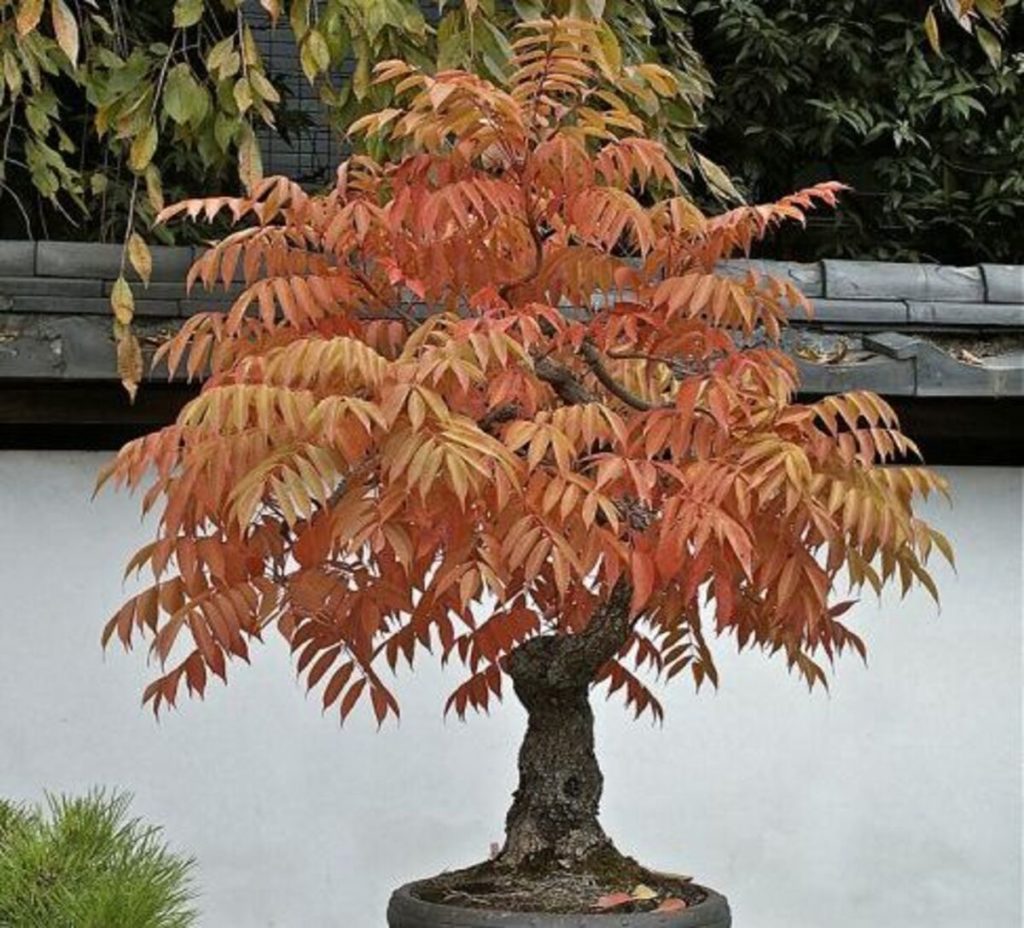
Characteristics of the Sumac Bonsai
The Sumac Bonsai exhibits several distinctive characteristics that make it an appealing choice for bonsai enthusiasts. Here are some key characteristics of the Sumac Bonsai:
Foliage: Sumac Bonsai is known for its compound leaves, which consist of multiple leaflets attached to a central stem. The leaves are typically medium to large in size, and their shape and arrangement can vary depending on the species and variety.
Autumn Colors: The Sumac Bonsai’s magnificent fall foliage is one of its features. As the seasons change, the leaves change color, showing brilliant shades of red, orange, and yellow. This fall coloring lends a compelling aspect to the bonsai’s overall visual appeal.
Bark: The bark of Sumac Bonsai can be smooth or rough, depending on the species. Some varieties feature attractive bark textures, such as the rough and textured bark of Staghorn Sumac (Rhus typhina), which adds visual interest to the bonsai’s trunk.
Growth Habit: Sumac Bonsai typically has an upright growth habit with a strong central trunk that branches out into smaller branches. The branching pattern can vary depending on the species and how it is trained and pruned.
Hardy and Drought – Tolerant: Sumac trees, particularly Sumac Bonsai, are noted for their durability and ability to survive a broad range of temperatures. They are typically resilient and can endure periods of dryness, making them appropriate for bonsai aficionados from all over the world.
Wildlife Attraction: Sumac Bonsai, especially varieties like Staghorn Sumac, produce clusters of small flowers and fruit that attract birds and other wildlife. This adds an element of liveliness and interaction to the bonsai environment.
Aesthetic Appeal: With its compound leaves, attractive bark, autumn colors, and overall growth pattern, Sumac Bonsai offers a unique and visually striking appearance. It brings a touch of natural beauty and a sense of maturity to any bonsai collection.
These characteristics contribute to the allure and charm of Sumac Bonsai, making it a sought-after variety among bonsai enthusiasts. With proper care and attention, Sumac Bonsai can thrive and showcase its captivating features for years to come.
Types of Sumac Bonsai
There are several types of Sumac Bonsai, each with its own unique characteristics and appeal. Here are some notable types of Sumac Bonsai:
1. Japanese Sumac Bonsai (Rhus glabra): Also known as Smooth Sumac, this variety features smooth gray bark and compound leaves that turn fiery shades of red and orange in autumn. It has a graceful branching pattern and is relatively easy to care for.
2. Staghorn Sumac Bonsai (Rhus typhina): Named for its distinctive branching structure resembling deer antlers, Staghorn Sumac Bonsai is known for its rough and textured bark. Its compound leaves turn vibrant shades of red, orange, and yellow in the fall. This variety adds a unique visual element to any bonsai collection.
3. Chinese Sumac Bonsai (Rhus chinensis): Native to China, this variety features compound leaves and smooth gray bark. Chinese Sumac Bonsai is highly valued for its striking red autumn foliage, which creates a captivating display. It has a compact growth habit, making it suitable for smaller bonsai displays.
4. Fragrant Sumac Bonsai (Rhus aromatica): This variety is known for its aromatic leaves, which emit a pleasant fragrance when crushed or brushed against. Fragrant Sumac Bonsai has compound leaves that turn vibrant shades of red, orange, and purple in the fall. It has a low-growing and spreading growth habit, making it ideal for cascading or semi-cascading styles.
5. Winged Sumac Bonsai (Rhus copallinum): Also referred to as Shining Sumac, Winged Sumac Bonsai is characterized by its distinctive winged stems. It has compound leaves that turn bright red, orange, or yellow in the autumn. This variety adds unique visual interest with its unusual stem structure.
6. Cutleaf Sumac Bonsai (Rhus glabra ‘Laciniata’): This variety is prized for its finely dissected or cut leaves, which create an intricate and delicate appearance. Cutleaf Sumac Bonsai showcases vibrant autumn colors and has a graceful and elegant growth habit.
These are just a few examples of the types of Sumac Bonsai available. Each variety offers its own charm, ranging from stunning autumn colors to unique bark textures and growth patterns. Selecting the right type of Sumac Bonsai depends on personal preference, desired aesthetics, and the specific characteristics one is looking for in their bonsai collection.
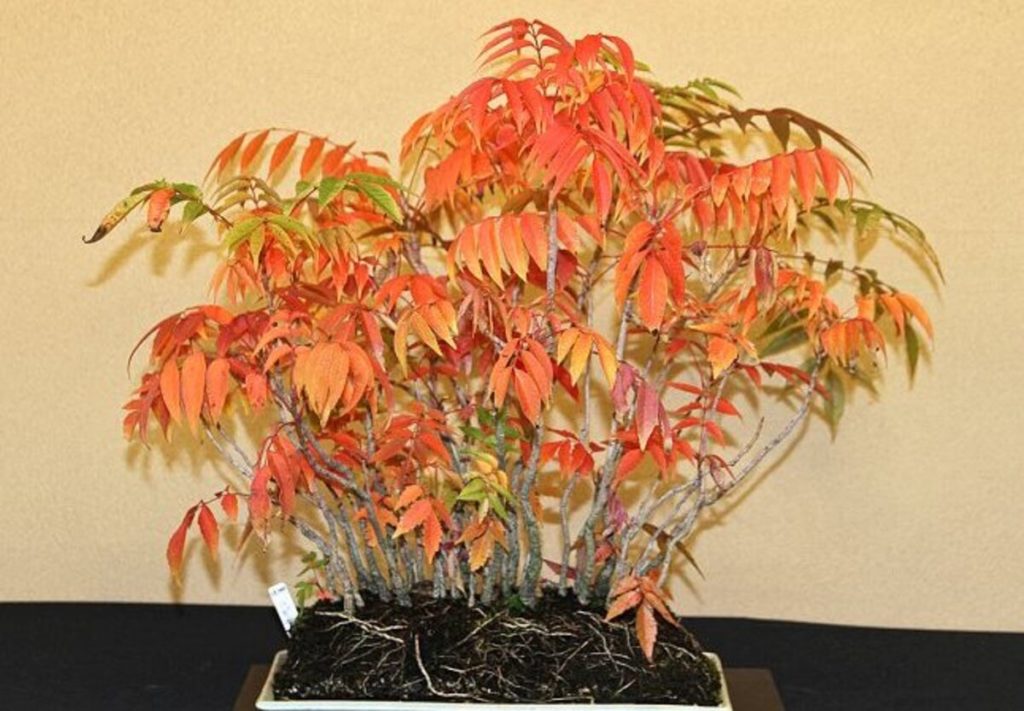
How to Grow a Sumac Bonsai
Growing a Sumac Bonsai requires careful attention to its specific needs and proper cultivation techniques. Here is a step-by-step guide on how to grow a Sumac Bonsai:
Selecting a Sumac Tree: Start by choosing a healthy Sumac tree that is suitable for bonsai cultivation. Look for a young tree with a strong trunk and well-developed branches. Consider the specific Sumac species or variety that appeals to you.
Container and Soil: Choose a bonsai container with good drainage holes to prevent waterlogging. Use a well-draining soil mix specifically formulated for bonsai. It should retain moisture while allowing excess water to drain freely.
Pruning and Shaping: Begin pruning and shaping the Sumac tree to create the desired bonsai form. Remove any undesirable branches, focusing on developing a well-balanced structure. Wiring techniques can be employed to guide the growth and shape the branches.
Light and Temperature: Sumac Bonsai thrives in full sun to partial shade conditions. Place the bonsai in an area that receives at least 6 hours of sunlight per day. Provide protection from extreme heat or cold to prevent stress.
Watering: Water the Sumac Bonsai thoroughly when the topsoil feels slightly dry. Avoid overwatering, as Sumac trees are tolerant of short dry periods. Ensure proper drainage to prevent waterlogged soil, which can lead to root rot.
Fertilization: Apply a balanced bonsai fertilizer during the growing season to provide essential nutrients. Follow the manufacturer’s instructions for proper dosage and frequency. Adjust the fertilization schedule during the dormant period.
Repotting: Repot the Sumac Bonsai every 2-3 years to refresh the soil and promote healthy root growth. Spring is the best time for repotting, just before the tree enters the active growth phase. Prune and trim the roots as necessary during repotting.
Pest and Disease Management: Monitor the Sumac Bonsai for common pests like aphids, scales, or mites. Treat any infestations promptly using appropriate methods or insecticides. Ensure good air circulation to prevent fungal diseases.
Seasonal Care: Adjust the care routine based on the seasons. Provide protection from frost during the winter and reduce watering. In spring, prune and repot if needed. During the summer, protect the bonsai from excessive heat and ensure adequate watering. In autumn, appreciate the vibrant foliage colors and adjust care as the tree prepares for dormancy.
Enjoy and Maintain: Regularly observe and appreciate the growth and development of your Sumac Bonsai. Continue to prune, shape, and maintain the tree’s form as it matures. Stay attentive to its needs and make adjustments accordingly.
Growing a Sumac Bonsai requires patience and dedication. By providing the right conditions, proper care, and ongoing maintenance, you can enjoy the beauty and unique characteristics of this captivating bonsai variety.
Benefits of the Sumac Bonsai
The Sumac Bonsai offers several benefits, making it a rewarding choice for bonsai enthusiasts. Here are some notable benefits of growing a Sumac Bonsai:
- Aesthetic Beauty: Sumac Bonsai showcases a captivating beauty with its compound leaves, attractive bark, and vibrant autumn colors. Its miniature form allows you to appreciate the natural beauty of a full-sized sumac tree at a compact and manageable size.
- Therapeutic and Stress Relief: Engaging in bonsai cultivation, including caring for a Sumac Bonsai, can have therapeutic effects. The process of nurturing and shaping a living tree can promote relaxation, reduce stress, and provide a sense of satisfaction and accomplishment.
- Connection with Nature: Growing a Sumac Bonsai lets you connect with nature on a smaller scale. It adds a bit of the natural world to your home or yard, making you feel calm and appreciative of the beauty of the world around you.
- Educational and Learning Experience: Growing a Sumac Bonsai gives you a chance to learn about the sumac tree species’ specific needs, growth patterns, and traits. As you care for the bonsai, you can learn more about plants and gardening.
- Adaptability: Sumac trees, including Sumac Bonsai, are renowned for their resilience and climate adaptability. They can withstand drought conditions and are resilient in general. This adaptability makes Sumac Bonsai an appropriate option for bonsai enthusiasts in various regions.
- Wildlife Attraction: Sumac Bonsai, especially certain varieties like Staghorn Sumac, produces clusters of small flowers and fruit that attract birds, butterflies, and other wildlife. It can contribute to creating a more vibrant and ecologically diverse environment.
- Creative Expression: Growing and shaping a Sumac Bonsai allows you to exercise your creativity and artistic expression. You can experiment with different pruning techniques, wiring styles, and designs to create a unique and personalized bonsai tree.
- Longevity: With proper care and maintenance, a Sumac Bonsai can live for many years, becoming a cherished part of your bonsai collection. It can be passed down through generations, creating a lasting legacy and connection to nature.
Because of these benefits, the Sumac Bonsai is a good choice for people who like bonsai because it is both satisfying and uplifting. Having a Sumac Bonsai in your home can bring you joy, beauty, and a greater link to nature.
Displaying and Showcasing the Sumac Bonsai
Displaying and showcasing a Sumac Bonsai requires thoughtful consideration to enhance its beauty and create an aesthetically pleasing presentation. Here are some tips on how to display and showcase your Sumac Bonsai:
1. Bonsai Stand or Table: Place your Sumac Bonsai on a bonsai stand or table to elevate it and provide a designated space for display. Choose a stand or table that complements the overall style and aesthetic of the bonsai.
2. Background and Setting: Select an appropriate background or setting that enhances the visual impact of the Sumac Bonsai. Consider using a plain or neutral-colored backdrop to allow the tree and its foliage to stand out. Avoid cluttered or distracting backgrounds.
3. Balance and Placement: Position the Sumac Bonsai on the display stand, ensuring a balanced and visually appealing composition. Consider the bonsai’s shape, size, and overall form when deciding its placement. Follow the principles of bonsai design, such as the Rule of Thirds, to create an attractive arrangement.
4. Accent Plants and Decorative Elements: Complement the Sumac Bonsai by adding accent plants or decorative elements to the display. Select small potted plants, rocks, or figurines that harmonize with the overall theme and add interest to the composition. Ensure that these elements do not overpower or detract attention from the bonsai itself.
5. Lighting: Adequate lighting is crucial for showcasing the beauty of your Sumac Bonsai. Place the display in a well-lit area, preferably with natural sunlight. Use additional artificial lighting, such as spotlights or LED grow lights, to enhance the visibility and highlight specific features of the bonsai.
6. Rotating Display: Periodically rotate the Sumac Bonsai’s position on the display stand to ensure even growth and prevent the tree from leaning in a particular direction. This also allows different angles and perspectives on the bonsai to be appreciated.
7. Showcasing During Bloom or Autumn Coloration: If your Sumac Bonsai blooms or exhibits vibrant autumn foliage, consider showcasing it during these seasons to highlight its unique features. Arrange the display to emphasize the colorful flowers or foliage, drawing attention to the bonsai’s natural beauty.
8. Regular Maintenance: Keep the Sumac Bonsai well-maintained and groomed, ensuring that the foliage is healthy and branches are properly pruned. Remove any dead leaves or branches and maintain a clean and tidy appearance for optimal display.
9. Exhibitions and Shows: Take part in bonsai shows or displays to show your Sumac Bonsai to more people. These events give you a chance to talk about what you love, get feedback, and learn from other bonsai fans.
Remember, displaying a Sumac Bonsai is a creative process, and personal preference plays a significant role. Experiment with different arrangements and settings until you achieve a display that highlights the beauty and unique characteristics of your Sumac Bonsai.
Styling and Design of Sumac Bonsai
The styling and design of a Sumac Bonsai involve shaping the tree to achieve the desired aesthetic and form. Here are some popular styling techniques and design considerations for Sumac Bonsai:
Informal Upright Style: Most Sumac Bonsai are made in the casual upright style. It has a straight base that gets thinner as it goes up, and the branches are spread out in a natural way. This style tries to look like how a grown tree grows on its own.
Slanting Style: The slanting style imparts a sense of movement and dynamic energy to the Sumac Bonsai. The trunk is inclined at an angle, creating an asymmetrical and visually striking composition. Ensure that the slanting trunk maintains balance and harmony with the branching structure.
Windswept Style: The windswept style evokes the impression of a tree shaped by strong winds or harsh weather conditions. The trunk and branches are twisted and bent, displaying a sense of resilience and endurance. This style requires careful wiring and bending techniques to create the desired effect.
Cascade Style: The cascade style is characterized by a downward-growing trunk that extends below the level of the bonsai container. This style conveys a sense of drama and elegance, resembling a tree growing on a cliff or near a water source. The cascading branches should be well-balanced and visually appealing.
Group Planting (Forest Style): Group planting, also known as the forest style, involves planting multiple Sumac Bonsai trees together to create a miniature forest scene. The trees should vary in height and trunk thickness to mimic the natural diversity found in a forest setting. The composition should convey a sense of harmony and balance among the trees.
Branch and Foliage Placement: When styling a Sumac Bonsai, pay attention to the placement of branches and foliage. Aim for a well-balanced distribution of branches throughout the tree’s structure. Allow enough space between branches to create a sense of depth and openness. Position foliage pads to create a visually pleasing arrangement.
Pruning and Wiring: Pruning and wiring are essential techniques in shaping the Sumac Bonsai. Prune branches to create desired shapes and remove unwanted growth. Wiring can be used to guide the growth and position of branches, creating the desired silhouette and form. Take care not to wire too tightly to avoid damaging the tree.
Naturalistic and Organic Forms: Sumac Bonsai styling often emphasizes a naturalistic and organic appearance, reflecting the beauty of mature trees found in nature. Embrace the inherent characteristics of the Sumac species, such as its compound leaves and attractive bark, to create a bonsai that looks harmonious and in tune with its surroundings.
When styling and designing your Sumac Bonsai, consider your personal aesthetic preferences and the specific characteristics of the tree. Remember that bonsai styling is an ongoing process, and refinement may be required over time to achieve the desired form and artistic expression.
How to Care for and Maintain a Sumac Bonsai
The health, growth, and life of a Sumac Bonsai depend on how well it is taken care of and kept up. Here are some important tips for caring for it:
- Watering: Sumac Bonsai prefers slightly moist soil but is also tolerant of short dry periods. Water the bonsai thoroughly when the topsoil feels slightly dry. Avoid overwatering, as it can lead to root rot. Ensure proper drainage to prevent waterlogged soil.
- Sunlight: Sumac bonsai does best in settings with full sun to some shade. Put the bonsai somewhere that gets at least six hours of sunshine a day. Protect it from the strong afternoon sun or give it shade on days when it’s very hot.
- Fertilization: Apply a balanced bonsai fertilizer during the growing season to provide essential nutrients. Follow the manufacturer’s instructions for proper dosage and frequency. Adjust the fertilization schedule during the dormant period.
- Pruning: Regular pruning helps maintain the desired shape and form of the Sumac Bonsai. Prune during the dormant season to remove unwanted branches, promote branching, and maintain the tree’s structure. Trim excessive growth and maintain balance within the canopy.
- Wiring and Shaping: Wiring techniques can be employed to guide the growth and shape the branches of the Sumac Bonsai. Use soft aluminum or copper wires to avoid damaging the branches. Remove the wires promptly to prevent them from cutting into the bark.
- Repotting: Repot the Sumac Bonsai every 2-3 years, preferably in spring before the tree enters its active growth phase. Repotting allows for the renewal of soil and the promotion of healthy root growth. Prune and trim the roots as necessary during repotting.
- Soil: Use a well-draining soil mix specifically formulated for bonsai. It should retain moisture while allowing excess water to drain freely. Avoid heavy, compacted soil that can lead to waterlogging.
- Protection from Extreme Conditions: Provide protection for the Sumac Bonsai during extreme weather conditions. Shield it from strong winds, frost, and intense heat to prevent stress and damage to the tree.
- Pest and Disease Control: Monitor the bonsai regularly for common pests like aphids, scales, or mites. Treat any infestations promptly using appropriate methods or insecticides. Ensure good air circulation to prevent fungal diseases.
- Seasonal Adjustments: Adjust the care routine based on the seasons. During the winter, reduce watering and protect the bonsai from freezing temperatures. In spring, resume regular watering and consider repotting. During summer, protect the bonsai from excessive heat and adjust watering accordingly. In autumn, appreciate the vibrant foliage colors and adjust care as the tree prepares for dormancy.
- Observation and Maintenance: Regularly observe the Sumac Bonsai for any signs of stress, pests, or disease. Remove dead leaves, trim overgrown branches, and maintain a clean and tidy appearance. Attend to the tree’s needs promptly to ensure its health and vitality.
By providing proper care and maintenance, you can enjoy the beauty and longevity of your Sumac Bonsai. Remember to be attentive to its specific requirements, adjust care based on the seasons, and appreciate the ongoing process of nurturing and shaping your bonsai tree.
Sumac Bonsai Care Sheet
| Aspect | Care Tips |
| Watering | – Water when the topsoil feels slightly dry |
| – Avoid overwatering and waterlogging | |
| Sunlight | – Place in full sun to partial shade |
| – Provide at least 6 hours of sunlight per day | |
| Temperature | – Tolerant of various temperatures, but protect from extremes |
| Humidity | – Moderate humidity levels are generally sufficient |
| Fertilization | – Apply a balanced bonsai fertilizer during the growing season |
| – Follow manufacturer’s instructions for dosage and frequency | |
| Pruning and Trimming | – Regularly prune to maintain shape and structure |
| – Trim excessive growth and maintain canopy balance | |
| Wiring and Styling | – Use soft aluminum or copper wire to guide and shape branches |
| – Remove wires promptly to prevent bark damage | |
| Repotting | – Repot every 2-3 years in well-draining bonsai soil |
| – Prune and trim roots during repotting if necessary | |
| Pest and Disease Control | – Monitor for common pests like aphids, scales, or mites |
| – Treat infestations promptly using appropriate methods | |
| Winter Care | – Reduce watering and protect from freezing temperatures |
| Regular Maintenance | – Observe for signs of stress, pests, or disease |
| – Remove dead leaves, trim overgrown branches | |
| – Maintain a clean and tidy appearance |
Please note that the care tips provided are general guidelines, and it’s important to observe and adjust the care routine based on the specific needs and conditions of your Sumac Bonsai.
Conclusion
Growing and caring for Sumac Bonsai can be a rewarding and enjoyable experience. By following the basic care guidelines, understanding seasonal needs, and troubleshooting issues, you can ensure the health and beauty of your Sumac Bonsai tree. Embrace the unique charm of these trees and appreciate the joy they bring to your bonsai collection.
FAQ
Q: What is a Sumac Bonsai?
A: A Sumac Bonsai is a miniature tree that has been trained and shaped using bonsai techniques from the Sumac plant species. It features a small, compact form that captures the beauty of a full-sized Sumac tree on a smaller scale. Sumac Bonsai trees are known for their compound leaves, attractive bark, and vibrant autumn colors.
Q: How do I care for a Sumac Bonsai?
A: To care for a Sumac Bonsai, provide it with adequate sunlight, watering when the topsoil feels slightly dry. Use well-draining bonsai soil and apply balanced bonsai fertilizer during the growing season. Prune and trim the branches to maintain their shape and structure. Protect the bonsai from extreme temperatures and monitor for pests and diseases.
Q: Can I keep a Sumac Bonsai indoors?
A: Sumac bonsai grows best outside, although it may be kept indoors for brief periods of time if it receives adequate sunshine and is not exposed to dry, hot air. It is preferable to keep the tree outside as often as possible to maintain it healthy and happy.
Q: How fast does a Sumac Bonsai grow?
A: The growth rate of a Sumac Bonsai can vary depending on the specific variety, environmental conditions, and care provided. Generally, Sumac Bonsai trees have a moderate growth rate, and with proper care, they can develop into stunning bonsai specimens over several years.
Q: Can I wire and shape my Sumac Bonsai?
A: Yes, wiring and shaping techniques can be used on Sumac Bonsai. Soft aluminum or copper wire can be employed to guide and shape the branches. However, it’s important to be cautious and remove the wires promptly to prevent them from cutting into the bark and causing damage.
Q: Does a Sumac Bonsai require repotting?
A: Yes, Sumac Bonsai plants should be repotted every 2-3 years to maintain healthy root growth and offer fresh soil. Typically, repotting is done in the spring, before the active growth phase begins. Pruning and trimming of the roots may be required during repotting to preserve the bonsai’s health and vitality.
Q: Do Sumac Bonsai trees have any special symbolism?
A: While bonsai symbolism can vary across cultures, Sumac Bonsai trees are often associated with resilience, strength, and endurance. The ability of the Sumac tree to adapt to various conditions and produce vibrant foliage in autumn is often seen as a representation of vitality and the cycles of life.
Q: Can I keep a Sumac Bonsai indoors?
A: While it is possible to keep a Sumac Bonsai indoors temporarily, it is generally recommended to place it outdoors where it can receive sufficient sunlight and fresh air for optimal growth and health.
Q: How often should I water my Sumac Bonsai?
A: Water your Sumac Bonsai when the topsoil feels slightly dry. Avoid overwatering, as it can lead to root rot. Ensure proper drainage in the bonsai pot.
Q: How tall does a Sumac Bonsai grow?
A: The height of a Sumac Bonsai depends on the specific variety and how it is trained and pruned. Generally, Sumac Bonsai trees can reach a height of 12–24 inches (30–60 cm) when mature.
Q: Can I shape a Sumac Bonsai using pruning techniques?
A: Yes, pruning is an essential technique to shape and maintain the form of a Sumac Bonsai. Regular pruning helps maintain the desired shape, remove unwanted growth, and promote branching.
Q: Does a Sumac Bonsai require special fertilizer?
A: Sumac Bonsai benefits from balanced bonsai fertilizer during the growing season. Follow the instructions on the fertilizer package for the correct dosage and frequency.
Q: How do I protect my Sumac Bonsai from pests and diseases?
A: Regularly inspect your Sumac Bonsai for common pests like aphids or scales. If infestations occur, treat them promptly using appropriate methods or insecticides. Ensure good air circulation and avoid overwatering to prevent fungal diseases.
Q: How should I prepare my Sumac Bonsai for winter?
A: During winter, reduce watering and protect your Sumac Bonsai from freezing temperatures. Place it in a sheltered location or use protective coverings to shield it from harsh weather conditions.
Q: How often should I repot my Sumac Bonsai?
A: Repot your Sumac Bonsai every 2-3 years to refresh the soil and promote healthy root growth. Repotting is typically done in the spring before the active growth phase begins.
Also Read:


